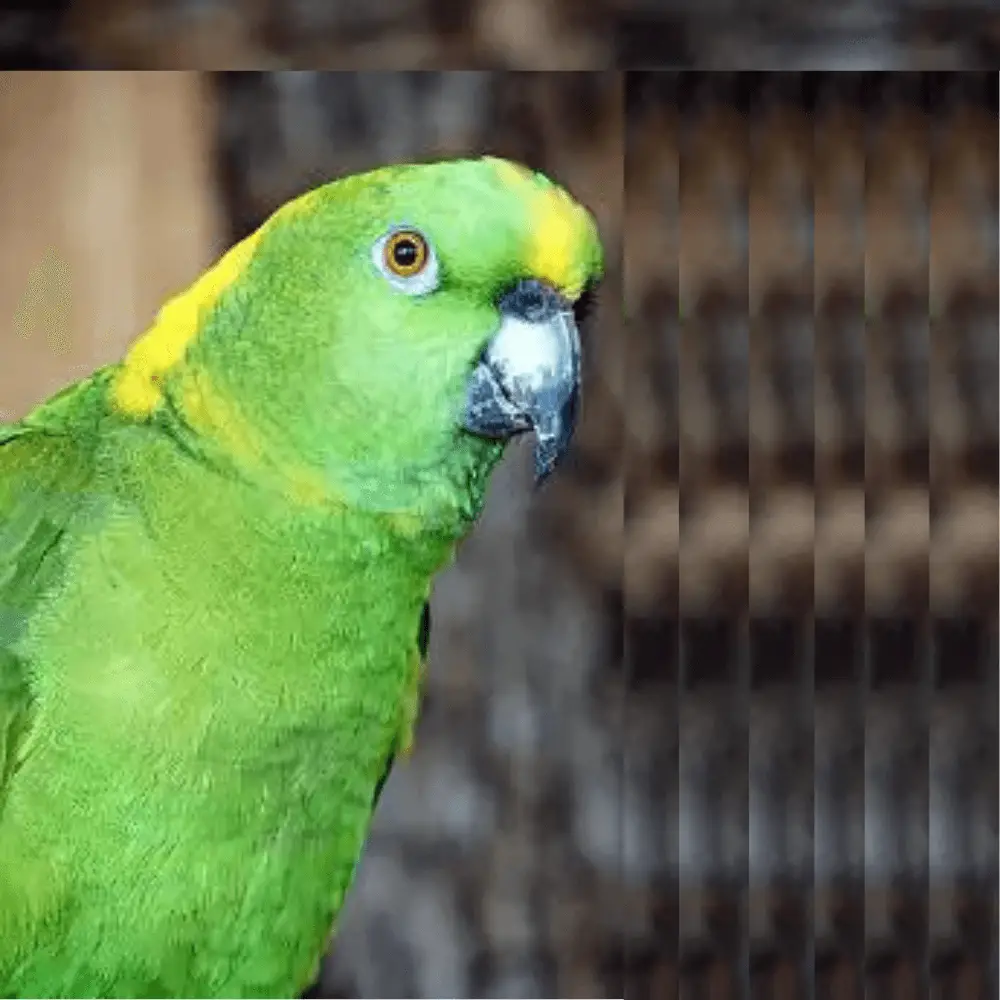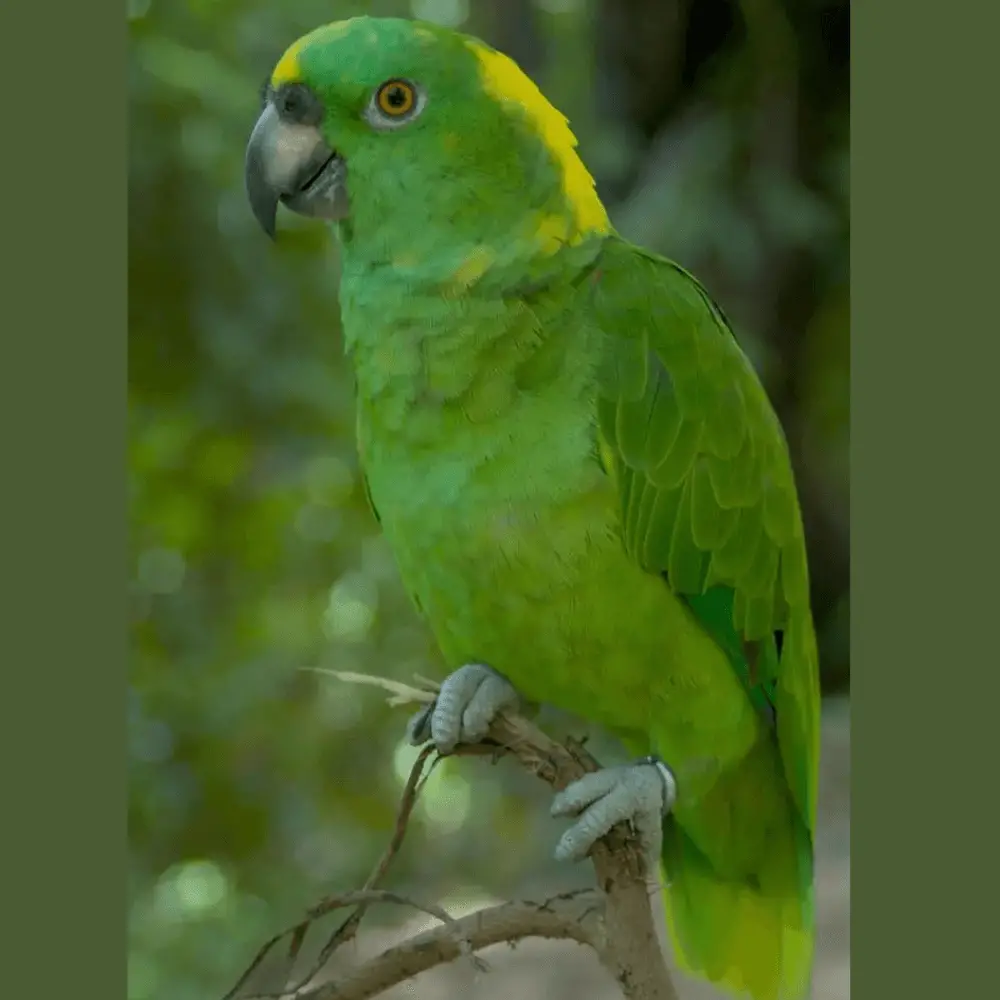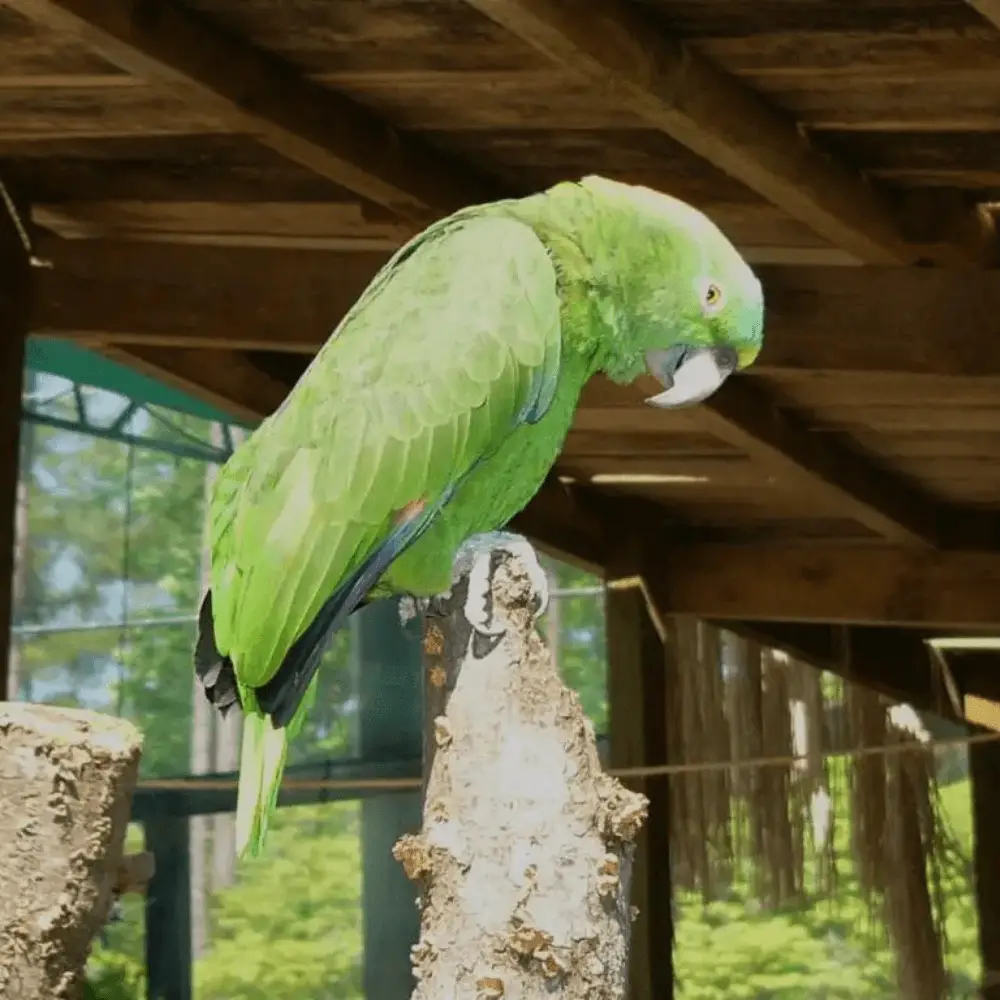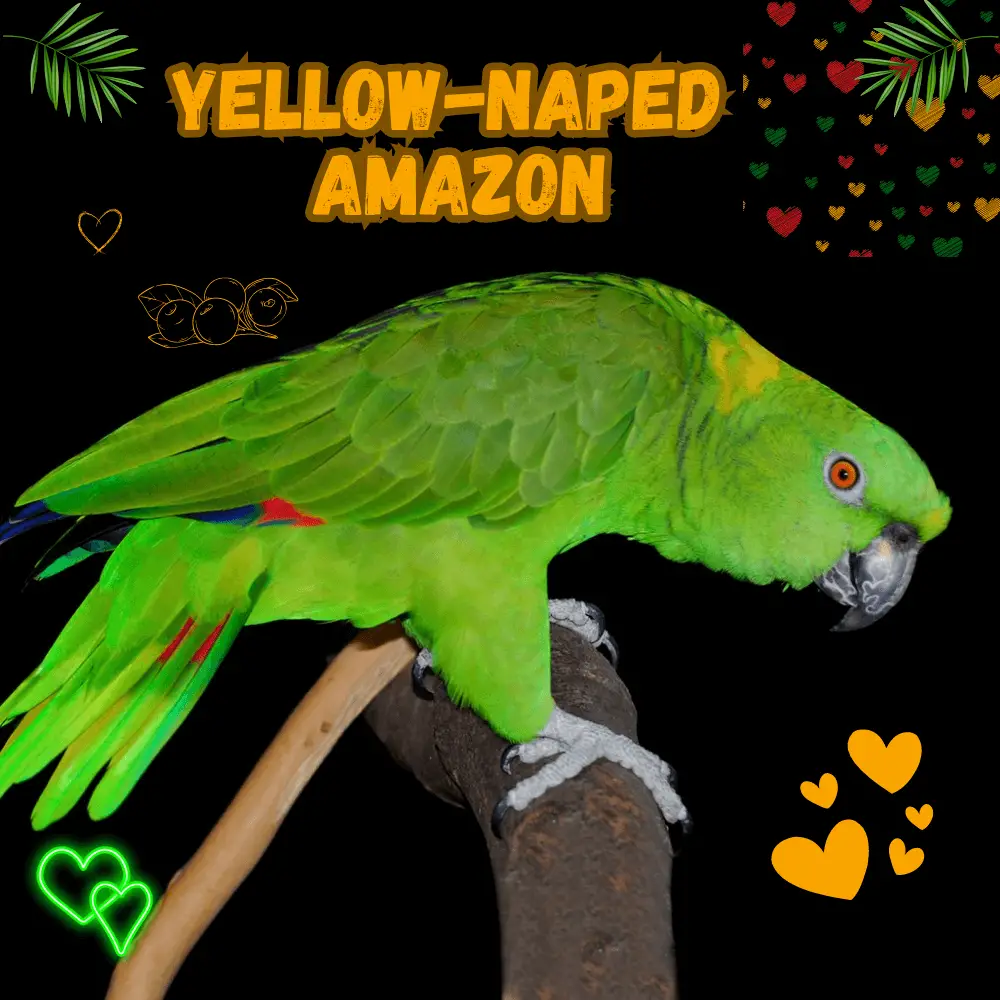Yellow-naped Amazon: 35.5-38cm. length and 480 grams. (Amazona auropalliata) It has a large size; its forecrown and the front of the crown, are generally pale bluish-green, sometimes with a narrow yellow fore-edge that extends to the front of the crown.
back of crown pale bluish green; lores, cheeks, and neck sides, green; nape with a wide band of golden yellow. The upper parts are green with some feathers in the mantle and back with blackish edges; Grupa Yes Uppertail-coverts slightly brighter than the rest of the upper parts.
The wing covers emerald green, but the upper body; has yellow feathers on the front edge of the wing in some birds. Outer networks of the four secondary external, bright red speculum; primary Yes secondary blue-violet external networks and towards the extremities. Below, the wings are green. Underparts are pale green with a slight bluish throat tint.
Green tail with a wide terminal of the yellow-green band, red at the base with outer networks of the outer feathers, of a bluish color. Bill bluish, tip black; gray orbital ring; Orange iris; gray legs.
Both sexes are similar. The immature has a green nape with yellow feathers which appear at the end of the first year; brown irises.
Yellow-naped amazon subspecies

Birds of Bay Islands are often treated as parties, I do not eat caribaea. A copy of the Guatemalan Pacific See the establishment before yellow, but the racial difference apparently not consistent.
- Amazona auropalliata auropalliata
( Lesson, PA, 1842) – Nominal. ( Lesson, PA, 1842) – Nominal. Pacific coast of Central America, from Oaxaca, Mexico, to northwest Costa Rica. ( Lousada, 1989) – Bay Islands, Honduras.
- Amazona auropalliata caribaea
( Lousada, 1989) – usually the adult’s triangular yellow patch in front of the crown. Young birds show little yellow on the head or nape. ( Monroe, BL Jr & Howell, TR, 1966) – Coast of the Mosquitos in Honduras and northeast of Nicaragua.
- Amazona auropalliata parvipes
( Monroe, BL Jr & Howell, TR, 1966) – less than nominate species, with red feathers on wing curve, otherwise similar.
The Amazona auropalliata It is often considered congeneric with the Amazona ochrocephala and the Amazona oratrix.
Where do Amazon parrots live
The Yellow-naped Amazon inhabits semi-arid forests, arid scrublands and savannahs (including those of Pinus ), openings in peaceful tropical deciduous forests and swamps, evergreen gallery forests, and, occasionally, second growth in agricultural areas.
Observed at 600 meters in Guatemala and 700 meters in Honduras. Usually in pairs or small groups, sometimes in large gatherings, but population decline may now obscure large herds in some areas. They meet in shared dormitories.
Distribution

The Yellow-naped Amazon is confined to Central America. They are distributed in the eastern Pacific lowlands of Mexic, Guatemala, Salvador, Honduras Y Nicaragua, and northwest of Costa Rica from the southern end of the Gulf of Nicoya north.
They can also be seen in the slope of Caribbean Honduras and on the Coast of the Mosquitoes of Honduras, as well as in the neighboring area of northeastern Nicaragua. found in Roatan Yes Guanaja, in the Bay Islands but absent in Utila.
Resident. Apparently rare in Oaxaca and rare and declining in Costa Rica. Birds seen in the Sula Valley, Honduras, were previously assigned to this species, but are now included in the species Yellow-headed Amazon.
Formerly common and locally abundant, but probably declining throughout its range due to the conversion of habitat for agricultural uses and its capture for local and international trade. Not yet listed as endangered, but its long-term status is uncertain if its population decline continues.
although Guanaja’s reasonable numbers remain, the species that inhabit the Bay Islands (Caribbean), is in serious decline due to capture for export (virtually 100% of hatchlings are captured each year); also threatened by tourism development, particularly Roatan.
Yellow-naped amazon breeding

Monogama; It maintains the union of couples throughout the year. It nests in natural tree cavities, such as holes in old or dead trunks, including Nicaragua and Bay Islands pines. mating season in February Oaxaca Yes Salvador; March Roatan. Clutch 2-3 eggs.
In captivity the nesting cycle of the Yellow-naped amazon with 29 days of egg incubation, followed by two months of growing young in the nest.
Yellow-naped amazon diet
Foods reported include seeds of Cachlospermum, Curatella, Higos Ficus, and mature Terminalia fruit. Birds in the Bay Islands were observed feeding on Pinus caribaea cones, with high seasonal dependence on this resource.
Yellow-naped amazon Endangered

• Current IUCN Red List Category: Vulnerable.
• Demographic trend: Degressive.
• Population size: 20000-49999.
This species has been uploaded as Vulnerable because information on exploitation and habitat loss levels, and local population trends, suggests that the species is at least suffering a rapid population decline.
In reality, the rate of decline can be very rapid; however, additional data is needed to confirm this, in which case the species may qualify for the Endangered elevation.
Partners in Flight estimates the population in numbers to be less than 50,000 individuals ( A. Punjabi in some. 2008 ), so it is placed in the band 20,000 to 49,999 individuals in bulk.
The population is suspected to be in rapid decline due to continued habitat destruction and unsustainable levels of hunting, a suspicion that is supported by observations of local population trends.
• Carry out awareness-raising activities to reduce exploitation.
• Increase the area of suitable habitat with effective protection.
Yellow crowned amazon as pets
Amazon nuquigualda populations have come under strong pressure from national and international trade (Ridgely, 1981, Iñigo-Elias and Ramos, 1992). There is now heavy illegal traffic in this species, both for domestic and international trade, Parrots are being seized at the Mexico-Texas border, with 648 specimens confiscated during 1990-1993 (Gobbi, et the., 1996).
protected by CITES Appendix I species (Endangered species, which they are or may be affected by international trade. Only trade in Appendix I species is permitted in exceptional circumstances, and it must not have a primarily commercial purpose.)
Each captive specimen of this species, which is capable of reproducing, should be placed in a well-managed captive breeding program and not sold as a pet, to ensure its long-term survival.
Yellow-naped Amazon for adoption
SOURCE: Golden Cockatoo
Related article:

